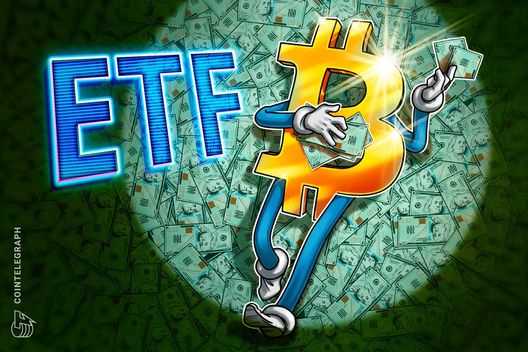In the world of cryptocurrency, Dogecoin has seen a notable decline, dropping 8% in trading on Tuesday as market dynamics shifted dramatically. The meme-inspired coin faced pressure at the $0.27 resistance level, following a significant sell-off by larger investors, known as whales, which resulted in a quick pivot back near $0.25. This day was marked by a substantial liquidation wave encompassing over a billion tokens, suggesting a volatile session. However, hints of smart money stepping back late in the day opened the door for speculative discussions about a potential base forming for Dogecoin.
Macroeconomic factors play a crucial role in the current cryptocurrency landscape. Traders are adjusting their expectations in light of nearly 98% odds predicting global monetary easing by the year’s end. This environment has contributed to increased volatility in both foreign exchange and cryptocurrency markets. As a high-beta asset, Dogecoin tends to react more dramatically to liquidity shifts, making its price movements particularly pronounced during periods of economic uncertainty.
Even amidst recent fluctuations, interest in Dogecoin remains buoyed by ongoing institutional narratives, particularly surrounding ETF filings from firms like Grayscale and Bitwise. These developments keep Dogecoin in the spotlight, suggesting that it has liquidity that extends beyond mere retail enthusiasm. Meanwhile, investment in Dogecoin mining has shown steady growth through 2025, indicating a commitment among whales and a vote of confidence in the cryptocurrency’s long-term potential.
On the technical side, Tuesday’s trading revealed a firm resistance at $0.27, as Dogecoin experienced a significant volume spike with 632.9 million traded. A notable drop occurred during the afternoon trading window, with a 5% decline amid intensified selling pressure. However, support at the $0.25 mark has proven resilient, attracting whale accumulation and mitigating the sell-off risk toward the $0.24 range. The subsequent bounce in the last hour of trading also suggested a potential recovery trajectory, reaffirming the importance of these price levels.
“As traders watch the structural support at $0.25, the interplay of institutional interest and macroeconomic indicators will be key in navigating the future of Dogecoin and its price movements.”
The current trading range for Dogecoin has seen notable activity, with a 24-hour fluctuation of $0.144, underscoring the fragile nature of order books in these volatile times. As the market continues to react to both technical patterns and broader economic conditions, the coming days will reveal whether Dogecoin can stabilize and push past resistance, or if it will face deeper corrections amidst ongoing macro headwinds.

Dogecoin Market Analysis
Key Points:
- Dramatic Market Movement: Dogecoin dropped 8% to $0.25 after facing resistance at $0.27 amid significant whale selling.
- Macro Conditions: Global monetary easing is an anticipated driver, influencing volatility in both FX and crypto markets.
- Institutional Interest: ETF filings from firms like Grayscale keep DOGE relevant, suggesting long-term liquidity beyond retail speculation.
- Whale Activity: Whale accumulation at $0.25 indicates confidence and may stabilize prices against deeper declines.
- Price Resistance: Resistance at $0.27 must be overcome for bullish momentum; sustained trading above this level could indicate stronger trends.
- Technical Patterns: A symmetrical triangle suggests potential breakout volatility, with critical levels at $0.30 and $0.47 upon resolving momentum.
- Pending Regulatory Impacts: Future SEC decisions on DOGE ETFs could significantly influence market liquidity and institutional strategies.
Understanding these dynamics can impact investment decisions and risk management for traders in the crypto market.
Current Trends and Insights on Dogecoin’s Market Movements
In the ever-evolving cryptocurrency landscape, Dogecoin has recently faced notable fluctuations, particularly with a sharp 8% drop amid substantial whale activity. This scenario mirrors similar trends seen in other meme-coins, where high volatility is triggered by liquidity conditions. The key competitive advantage for Dogecoin remains its significant backing from both retail and institutional investors, particularly with ongoing ETF interest, which enhances its visibility and potential for capital inflow. This narrative contrasts with other cryptocurrencies that lack such robust institutional engagement.
However, the volatility of meme-coins poses substantial risks. Dogecoin’s reliance on macroeconomic indicators and speculative trading can lead to unpredictable price movements, as evidenced by its rapid descent to $0.25 from the $0.27 resistance. This could deter risk-averse traders, steering them toward more stable options like Bitcoin or Ethereum, which have historically shown resilience amid macroeconomic shifts.
The ongoing accumulation behavior of whales could signal a promising outlook for those looking to invest in Dogecoin long-term. Yet, if substantial support levels fail to hold, it could create panic selling, not just for DOGE but potentially impacting the broader meme-coin market as well. Traders are closely monitoring the ability of the $0.25 support to sustain itself. A breach could trigger a cascading effect, prompting a reevaluation of investment strategies across similar assets.
Moreover, with the backdrop of anticipated global monetary easing, traders are keenly observing the shifts in risk appetite. Those seeking high-beta plays might find opportunities in Dogecoin, while more conservative investors could feel disadvantaged by its erratic nature. The unfolding scenario presents varied implications: enthusiasm among high-risk traders may juxtapose the cautious stance of traditional investors.

















